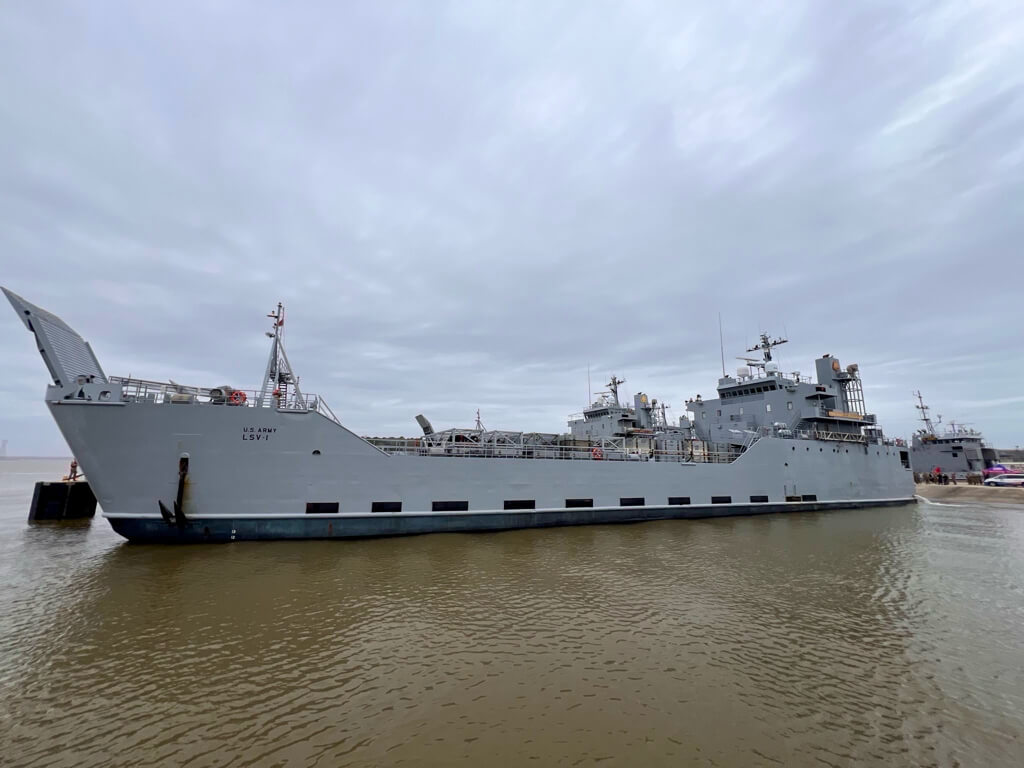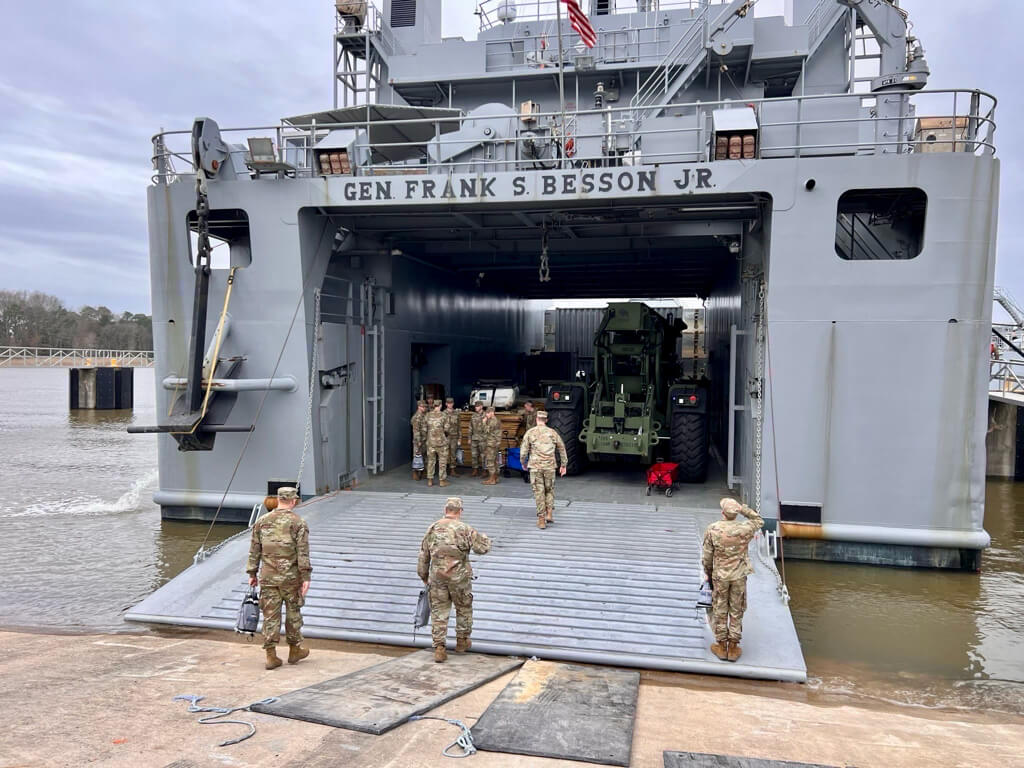The U.S. military has dispatched the first vessel of its newly-announced plan to build a temporary pier in Gaza – and it isn’t a Navy vessel. The U.S. Army landing craft Gen. Frank S. Besson has departed Virginia for the Eastern Mediterranean, less than 36 hours after President Joe Biden formally announced the aid initiative.
At 270 feet, Gen. Besson is one of the Army’s biggest powered vessels. It has a range sufficient for ocean crossings, but can also deliver 15 main battle tanks or 80 TEU worth of cargo to the beach. Its shallow 12-foot draft and bow ramp are designed for over-the-shore deliveries, and its stern ramp gives it a unique drive-through capability. The Navy does not have a similar seagoing landing vessel in its inventory, though the Marine Corps would like it to procure one.


Besson with stern ramp down (Images courtesy U.S. Army)
The Besson is part of a mission to establish a Joint Logistics Over The Shore (JLOTS) operation in Gaza to alleviate the growing risk of famine. Israel has restricted the options aid convoy border crossings while its military operations are under way, and all Gazans face varying degrees of malnutrition after four months of combat-related control measures. The pier will circumvent these land-side limitations on access, relieving some of the political pressure on the White House to act.
JLOTS involves using floating bridge sections to build a working cargo pier (or Trident Pier) from an unimproved beachhead. It draws on the capabilities of civilian-crewed Military Sealift Command, the Navy’s beach master units, the Seabees and the assault craft community. The Israeli military will be assisting with the shoreside portion of the operation, according to the White House.
The Army’s landing ships can deliver construction equipment to shore in order to establish a beachhead, and the service intends to expand on that capability. In the years ahead, the Army plans to acquire a much larger 400-foot Maneuver Support Vessel – Heavy (MSV-H). With a payload of up to 175 soldiers and their equipment, it would have more than twice the capacity of the Marine Corps’ proposed Landing Ship-Medium (LSM).
The LSM is designed to perform the same mission as the Besson, but the program is “late to need,” Deputy Commandant of the Marine Corps Lt. Gen. Karsten Heckl told Defense News last week. The Marine Corps’ oceangoing amphib fleet can also perform the same ship-to-shore function with hovercraft and landing craft, but many of these ships are in need of repair or replacement to maintain readiness. The remaining force is stretched thin, according to the service: the three amphibs and 2,000 Marines of the Bataan Amphibious Ready Group (ARG) were off Gaza until last week, but left just days before the Gaza aid mission was announced. They had been deployed for eight months and there will be no immediate replacement for an amphibious force in the Eastern Mediterranean.